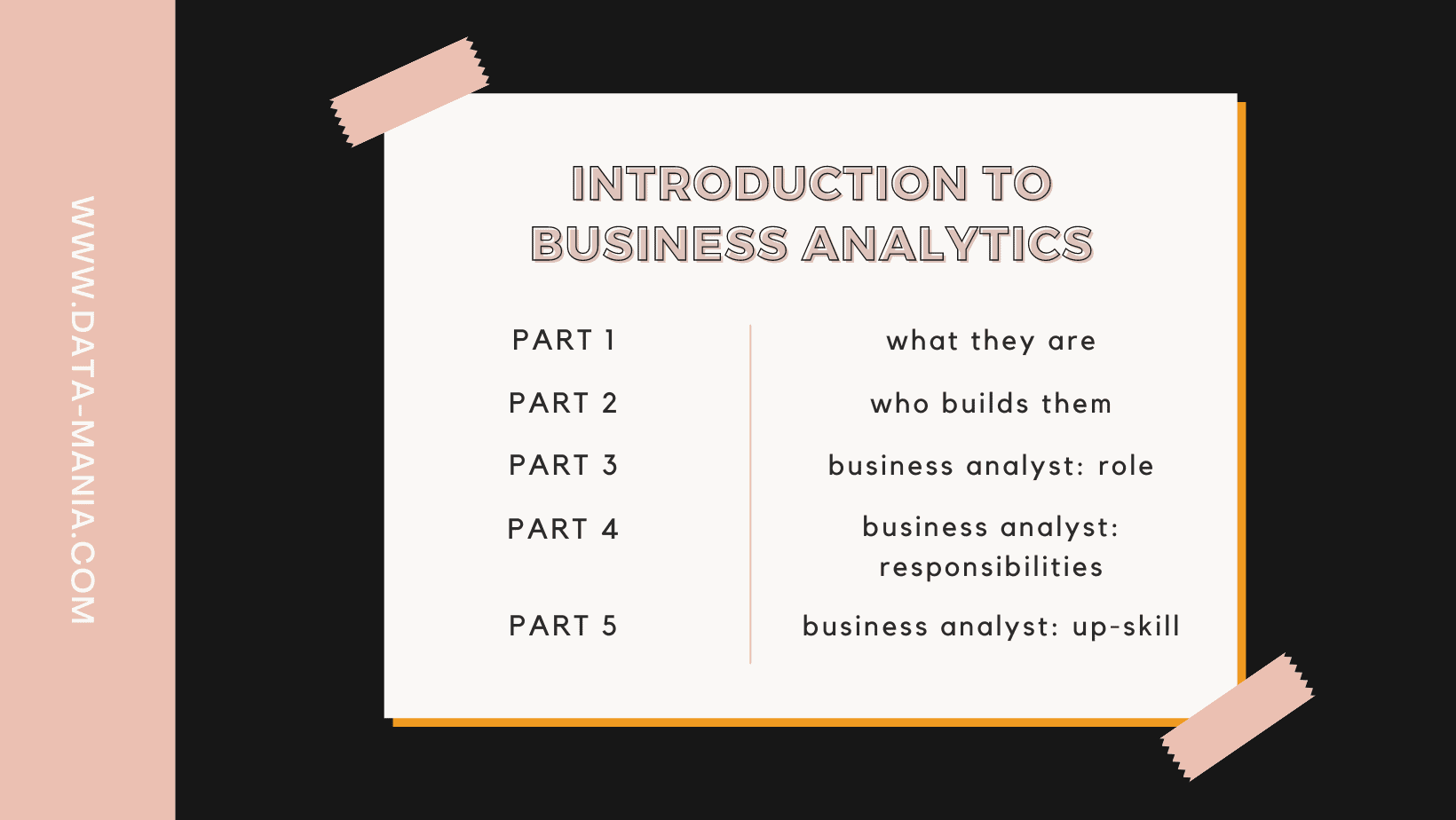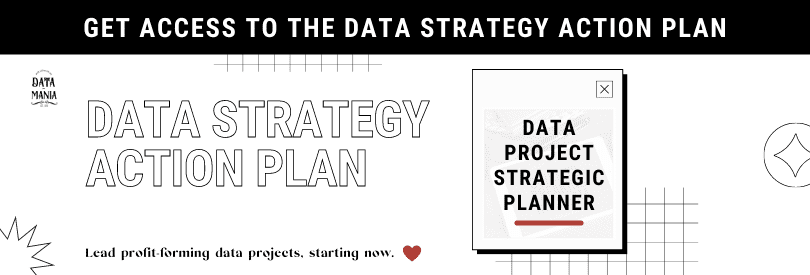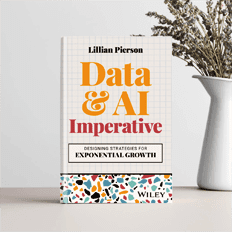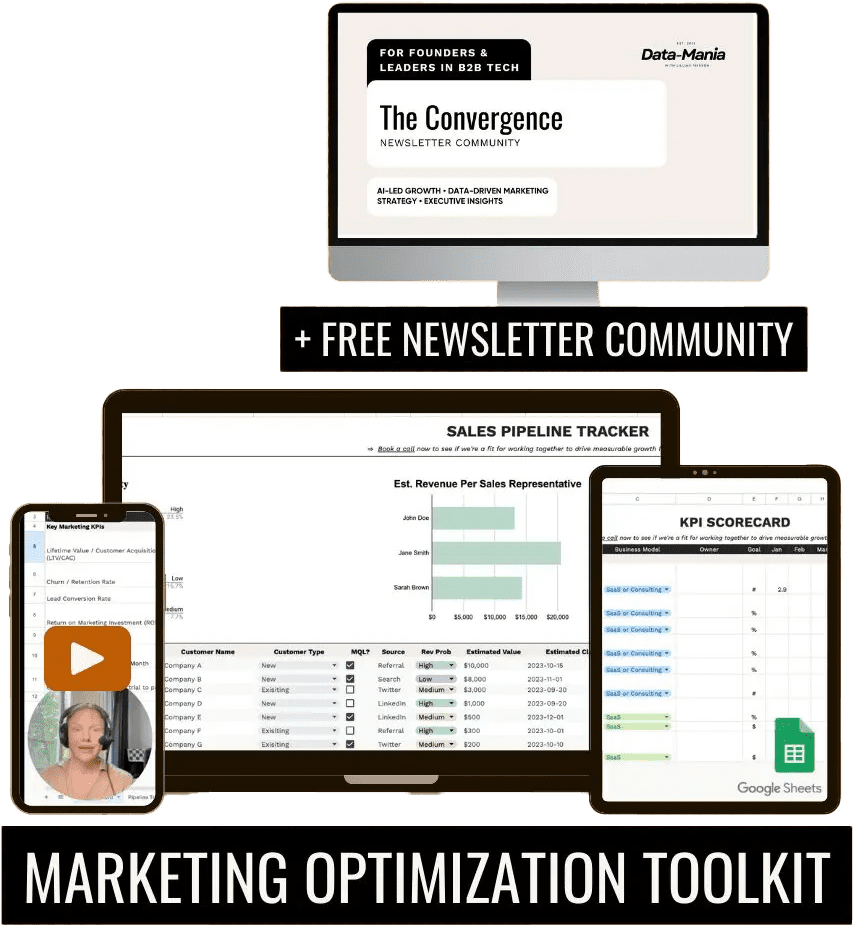Introduction to Business Analytics – ever wonder what business analytics are? To the average person, the concept of business analytics may seem foreign, complex and ambiguous. And it’s with good reason — without extensive knowledge of the subject, business analytics can quickly become overwhelming.
There are plenty of online resources you can use to better educate yourself about business analytics and possible career opportunities in the field.
Below is a brief introduction to business analytics and some more information about the industry. Let’s explore more details about business analytics to improve your understanding of the subject and some examples of skills necessary to obtain a career in this critical field of interest.
YouTube URL: https://youtu.be/ot1tcZEvuxc
If you prefer to read instead of watch then, read on…
For the best data leadership and business-building advice on the digital block, subscribe to my newsletter below and I’ll make sure you get notified when a new blog installment gets released (each week). 👇
[convertkit form=5131701]
Business analytics is the science of using data to draw conclusions and gather insights that offer value to a company or industry. The data collected is used to build mathematical models that help professionals make data-driven business decisions.
Essentially, data surrounds us in every aspect of life. Information is constantly being shared to and from organizations in the form of transactions and other exchanges. Whether you’re using devices like smartphones or purchasing items at a grocery store, data is everywhere.
Specific types of data help drive business decisions, such as descriptive, predictive, and prescriptive. These three types of data make up the data that offer value to businesses. Here’s some more information about these types of data:
- Descriptive: helps make sense of the data available and draws conclusions from the past
- Predictive: looks forward and predicts trends likely to occur in the future
- Prescriptive: assists analysts when prescribing actionable steps to reach business goals

What Are Business Analytics & Who Build Them
Some of the job titles associated with business analytics are business analyst, data scientist, modeler, quantitative analyst, data business analyst and business analyst manager. All of these jobs are responsible for working with large data sets and finding trends and patterns within them. Companies are looking to hire business analysts to spend time working with data to use it to inform their business decisions, whether it’s taking steps to increase revenue or decrease costs.
Now, what’s the difference between business analytics and data science?
Business Analytics vs. Data Science
One of the main differences between the two topics regarding data is that data science focuses on using coding and other methods of cleaning and sorting data into manageable sets.
Data scientists rely on computer science skills to accomplish their tasks, while business analysts use statistical concepts to analyze data.
While business data analysts focus on outcomes for their clients, data scientists can draw conclusions from data without focusing on any specific results.
Business analysts typically work in the health care, finance, and marketing industries, whereas data scientists work in e-commerce, manufacturing and machine learning industries. These are only examples, however, and both of these roles can cross into different sectors.
Learn more about the differences of each role here: Data Analyst vs. Data Scientist.
Roles & Responsibilities of a Business Analyst
Listed below are some of the roles and responsibilities a business analyst must undertake while providing valuable information to their clients.
- Data interpretation
- Data visualization
- Storytelling
- Analytical reasoning
- Math and statistics skills
- Written and verbal communication skills
Business analysts must plan, monitor, price and create detailed reports which include their top takeaways from data sets.
Analysts must be comfortable working with data in software like Microsoft Excel, Python and R programming language. Many businesses are making a digital transition to the cloud, and cloud computing is a skill business analysts should know.
Let’s discuss some of the specific skills business analysts need to perform well in their roles.
Business Analyst Skills
 Because business analysts are needed in multiple industries, it may be worth looking into getting a bachelor’s or master’s degree specializing in analytics. However, alternatives to the traditional education system can help someone grow their knowledge of business analytics.
Because business analysts are needed in multiple industries, it may be worth looking into getting a bachelor’s or master’s degree specializing in analytics. However, alternatives to the traditional education system can help someone grow their knowledge of business analytics.
The open online course platform, Udemy, has many courses available to those interested in business analytics. It’ll be crucial for those interested to consider taking these core courses to fine-tune their skills and prepare for an entry-level position in business analytics. These courses serve as supplements that can make someone attractive to hiring managers.
Fundamental Analytics Skills: Intro to Business Analytics
In this introduction to business analytics course, students will learn the basic concepts and best practices of business analytics. They will also learn to identify analytical methods, master fundamental concepts and understand differences between predictive and prescriptive analytics.
Turn Data to Insights: Complete Introduction to Business Data Analysis
Students enrolled in this course have the opportunity to learn more about the actual analysis taking place. Students will be exposed to drag and drop techniques to master analytics, rather than using confusing formulas, macro or VBA. Understand how to turn data into actionable steps businesses can take to fuel future growth.
Python Data Analysis: 12 Easy Steps to the Python Data Analysis, the Beginner’s Guide
Python is a frequently used programming language in the world of business analytics. In the course, students will learn the ins and outs of Python and learn how automation helps improve efficiency. Students will learn how to use Python to deliver valuable insights to clients, so they’re ready when they enter the industry.
These are a few examples of the courses available. Udemy has plenty of other classes to choose from, depending on the student’s existing knowledge.
Entering the Business Analytics Industry
If you’re interested in becoming a business analyst or a data scientist, the field of analytics is proliferating, and more companies are looking for individuals capable of providing them with valuable insights. Consider enrolling in a four-year program or take a look at the courses listed on Udemy. The analytics field shows plenty of promise for the future.
Watch this video on the data analyst career path to learn everything you need to know about how to become a data analyst.
If you like this introduction to business analytics article and you want to consider taking this career path, you’re probably wondering if this role would suit you well. Find that out by taking the data superhero quiz! It’s a free and super-fun 45-second quiz that will help you uncover your inner data superhero. By that, I mean it will help you uncover the optimal data career path for you given your skill sets and personality types. After taking it, you’ll get personalized data career recommendations as well as all sorts of information about various data roles and compensation statistics related to those roles.
Take the Data Superhero Quiz today!
NOTE: This description contains affiliate links that allow you to find the items mentioned in this blog and support the channel at no cost to you. While this channel may earn minimal sums when the viewer uses the links, the viewer is in NO WAY obligated to use these links. Thank you for your support!
A Guest Post By...
This blog post was generously contributed to Data-Mania by Shannon Flynn. Shannon Flynn is a freelance blogger who covers business, cybersecurity and IoT topics.








